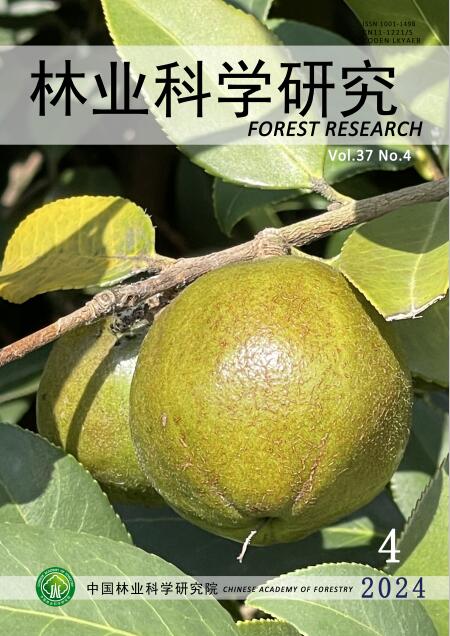Assessing Variability and Divergence of Jatropha curcas Linn. Germplasm Under Ex-situ Conditions
Q4 Agricultural and Biological Sciences
引用次数: 2
Abstract
An evaluation of 100 genotypes of Jatropha curcas L. was carried out to assess variability and character association and to identify diverse genotypes with superior growth traits. Variability studies revealed that, 39 accessions performed better in terms of above average values for volume index (479.41 cm3), indicating better vigor of the plants. Genotypes IC 555380, IC 555381, IC 555379, IC 569133 were found to be superior on the basis of plant height (100.34 cm), collar diameter (3.59 cm), number of branches (3.34) and volume index (1054.91 cm3) respectively. A wide range of variation was observed for plant height (41.11-100.34 cm), collar diameter (1.95-3.59 cm), branch number (1.36-3.34) and volume index (172.10-1045.91 cm3). Estimates of broad sense heritability ranged from 5.28 to 29.78%, genetic advance in percent of the mean ranged between 4.24 and 32.82 with number of branches giving the lowest value and volume index giving the highest value. All the growth traits showed positive significant correlation at both genetic and phenotypic levels with volume index. Path analysis of growth traits revealed that the height (0.719) is the most pronounced trait contributing directly to volume index followed by collar diameter (0.206) and number of branches (0.110). Diversity analysis using Mahalanobis D2 resulted in 7 clusters. Genotypes in cluster 2,3,4,5, and 6 have combination of desirable traits and can be directly selected for further improvement.麻疯树的变异和分化评价。移地条件下的种质
通过对100个麻疯树基因型的评价,分析了麻疯树基因型的变异和性状相关性,并鉴定出具有优良生长性状的基因型。变异研究表明,39份材料的体积指数高于平均值(479.41 cm3),表明植物的活力较好。基因型IC 555380、IC 555381、IC 555379、IC 569133在株高(100.34 cm)、领径(3.59 cm)、分枝数(3.34)和体积指数(1054.91 cm3)方面均较优。株高(41.11 ~ 100.34 cm)、领径(1.95 ~ 3.59 cm)、枝数(1.36 ~ 3.34 cm)和体积指数(172.10 ~ 1045.91 cm3)的变异幅度较大。广义遗传力估计范围为5.28 ~ 29.78%,平均遗传超前率估计范围为4.24 ~ 32.82,其中分枝数最低,体积指数最高。所有生长性状在遗传和表型水平上均与体积指数呈显著正相关。通径分析表明,对体积指数有直接影响的性状为高(0.719),其次为领径(0.206)和分枝数(0.110)。利用Mahalanobis D2进行多样性分析,得到7个聚类。聚类2、3、4、5和6的基因型具有理想性状组合,可直接选择进一步改良。
本文章由计算机程序翻译,如有差异,请以英文原文为准。
求助全文
约1分钟内获得全文
求助全文
来源期刊

林业科学研究
Environmental Science-Ecology
CiteScore
0.90
自引率
0.00%
发文量
4834
期刊介绍:
Forestry Research is a comprehensive academic journal of forestry science organized by the Chinese Academy of Forestry. The main task is to reflect the latest research results, academic papers and research reports, scientific and technological developments and information on forestry science mainly organized by the Chinese Academy of Forestry, to promote academic exchanges at home and abroad, to carry out academic discussions, to flourish forestry science, and to better serve China's forestry construction.
The main contents are: forest seeds, seedling afforestation, forest plants, forest genetic breeding, tree physiology and biochemistry, forest insects, resource insects, forest pathology, forest microorganisms, forest birds and animals, forest soil, forest ecology, forest management, forest manager, forestry remote sensing, forestry biotechnology and other new technologies, new methods, and to increase the development strategy of forestry, the trend of development of disciplines, technology policies and strategies, etc., and to increase the forestry development strategy, the trend of development of disciplines, technology policies and strategies. It is suitable for scientists and technicians of forestry and related disciplines, teachers and students of colleges and universities, leaders and managers, and grassroots forestry workers.
 求助内容:
求助内容: 应助结果提醒方式:
应助结果提醒方式:


